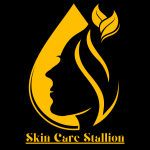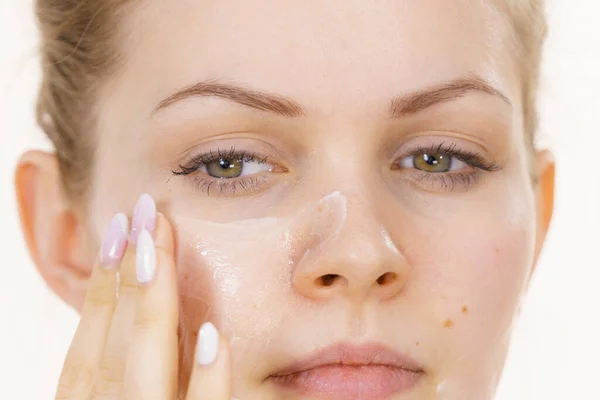How to treat chemical burn on face: Start by rinsing the affected area with cool, running water for at least 20 minutes to remove the chemical substance, then gently cleanse with a mild soap and seek medical attention immediately for further evaluation and treatment.
Facing the harsh reality of a chemical burn on your face can be both alarming and distressing, but understanding the steps to treat it effectively can make all the difference. In this comprehensive guide, we’ll navigate the immediate actions and long-term care essential for healing and minimizing damage.
From soothing initial pain to promoting skin recovery, learn how to turn a potentially scarring experience into a journey of resilience and renewal. Dive in to discover expert advice and practical tips that will restore not only your skin’s health but also your confidence.
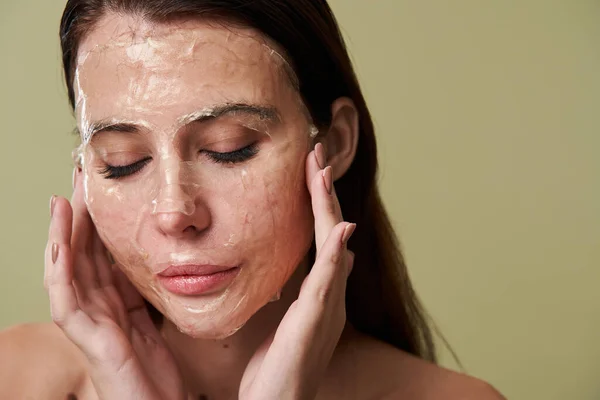
Table of Contents
ToggleHow To Treat Chemical Burn On Face
To treat a chemical burn on the face, immediately rinse the area with cool water for at least 20 minutes. Remove contaminated clothing and avoid using any ointments or creams until advised by a healthcare professional. Seek medical attention to assess the severity of the burn. Avoid touching or scratching the burn area. Follow a doctor’s guidance for aftercare and monitoring.
Immediate First Aid Steps
Chemical burns on the face require prompt action to minimize damage and prevent further injury. The first step is to flush the affected area with cool, running water for at least 20 minutes. This helps to dilute and remove the chemical from the skin. It’s important to avoid hot water, as it can exacerbate the burn.
Removing any contaminated clothing and jewelry ensures that no additional chemical comes into contact with the skin. Do not apply any creams, ointments, or home remedies before consulting a healthcare professional. Over-the-counter treatments might not be suitable and can potentially worsen the condition.
Seeking Medical Attention
After providing initial first aid, seeking professional medical help is crucial. Chemical burns can vary greatly in severity, and a healthcare provider can accurately assess the damage.
They might perform a thorough cleansing of the burn area, apply specialized burn dressings, and prescribe medications to manage pain and prevent infection. In severe cases, they may recommend follow-up care with a dermatologist or a plastic surgeon. Keeping follow-up appointments ensures proper healing and reduces the risk of complications.
Aftercare and Monitoring
Proper aftercare is essential for healing a chemical burn on the face. The doctor might advise keeping the burn area clean and dry, applying prescribed topical treatments, and covering the burn with sterile dressings. Monitoring the burn for signs of infection, such as increased redness, swelling, or pus, is vital.
If any of these symptoms occur, contact your healthcare provider immediately. Avoid exposing the burn to sunlight, as the damaged skin is more susceptible to UV damage. Use sunscreen with high SPF if going outdoors is necessary. Hydration and a healthy diet can support the body’s healing process.
Prevention Tips
Preventing chemical burns is always better than treating them. When handling chemicals, always use protective gear, such as gloves and safety goggles. Follow the instructions on chemical products carefully and store them safely out of reach of children.
In workplaces where chemicals are used, adhere to safety protocols and have emergency wash stations accessible. Educating yourself and others about the dangers of chemicals and the importance of proper handling can significantly reduce the risk of chemical burns. In case of any exposure, knowing the first aid steps can make a critical difference in the outcome.
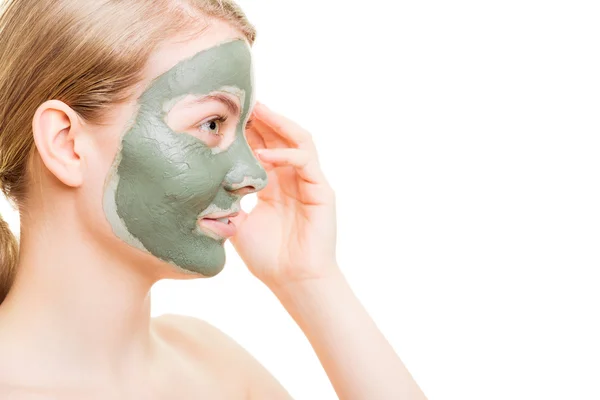
Understanding Chemical Burns
Causes of Chemical Burns
Household Chemicals
Chemical burns often occur due to household chemicals like bleach, drain cleaners, and ammonia. These substances can cause severe skin damage, especially if not handled with care. People commonly refer to these burns as “household accidents.”
Industrial Chemicals
Exposure to industrial chemicals such as strong acids, alkalis, and solvents can lead to serious chemical burns. Workers in factories, labs, and construction sites are at higher risk. These burns are often termed “occupational hazards.”
Cosmetic Products
Certain cosmetic products, including hair dyes, skin creams, and peels, contain chemicals that can cause burns. These incidents are frequently described as “beauty treatment mishaps.”
Types of Chemicals Involved
Acids
Acid burns result from exposure to substances like sulfuric acid, hydrochloric acid, and nitric acid. These burns are known for causing immediate pain and damage upon contact. People often describe them as “acidic injuries.”
Alkalis
Alkali burns are caused by chemicals such as sodium hydroxide and potassium hydroxide. These burns can be more severe than acid burns, penetrating deeper into the skin. Commonly, they are referred to as “alkaline burns.”
Solvents
Solvents like acetone, paint thinner, and gasoline can cause chemical burns. They typically damage the skin by dissolving fats and oils. These injuries are often called “solvent-related burns.”
Severity Levels of Chemical Burns
First-Degree Burns
First-degree chemical burns affect only the outer layer of skin. Symptoms include redness, mild swelling, and pain. These burns are similar to “superficial burns.”
Second-Degree Burns
Second-degree chemical burns penetrate deeper into the skin, causing blisters, severe pain, and possible scarring. These burns are frequently labeled as “partial-thickness burns.”
Third-Degree Burns
Third-degree chemical burns destroy all layers of the skin, potentially affecting underlying tissues. They result in white or charred skin and loss of sensation. These are often called “full-thickness burns.”
Understanding the causes, types, and severity of chemical burns is crucial for prevention and treatment. Whether from household items, industrial chemicals, or cosmetic products, knowing how to handle and avoid these substances can reduce the risk of serious injury.
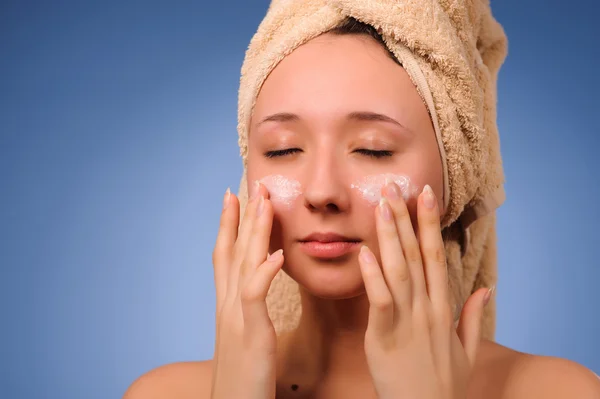
Immediate Steps to Take After a Chemical Burn
Ensuring Personal Safety
Prioritize your safety first. Before assisting anyone with a chemical burn, put on protective gloves and eyewear. This prevents further injury and keeps you safe from hazardous chemicals.
Removing the Chemical
Identifying the Chemical
Quickly identify the chemical causing the burn. Check for labels or ask the affected person. Knowing the chemical type helps in taking appropriate action.
Removing Contaminated Clothing and Accessories
Immediately remove any clothing or accessories contaminated by the chemical. This prevents the chemical from spreading and causing more damage. Cut away clothing if needed to avoid pulling it over the head.
Rinsing the Affected Area
Using Cool Running Water
Rinse the affected area with cool running water. Ensure the water flows gently over the burn to wash away the chemical without aggravating the injury.
Duration of Rinsing (At Least 15-20 Minutes)
Continue rinsing the burn for at least 15-20 minutes. This helps dilute and remove the chemical, reducing further damage and pain.
Avoiding Harmful Actions
Do Not Use Ice or Very Cold Water
Avoid using ice or very cold water on the burn. Extreme temperatures can cause more harm and slow down the healing process.
Do Not Apply Creams, Ointments, or Oils
Do not apply creams, ointments, or oils to the burn. These substances can trap the chemical on the skin and worsen the injury.
Taking these immediate steps after a chemical burn is crucial for minimizing damage and promoting healing. Ensure you act quickly and follow these guidelines for the best outcome.
Assessing the Burn
Assessing the burn severity involves keen observation for signs indicating the extent of injury. Minor burns typically exhibit redness, swelling, and mild pain. In contrast, serious burns often display blistering, charred skin, and severe pain, indicating deeper tissue damage.
Determining the severity of a burn is crucial for appropriate medical intervention. Minor burns may be manageable at home with cool water and over-the-counter ointments. However, serious burns require immediate medical attention to prevent complications such as infection and scarring.
Knowing when to seek medical attention is essential for burn care. Emergency care is warranted if the burn covers a large area, appears charred or white, or is accompanied by symptoms like difficulty breathing or unconsciousness. Consultation with a healthcare professional is recommended for burns that cause intense pain, blistering, or concern regarding infection.
By understanding the signs of burn severity and knowing when to seek medical assistance, individuals can ensure prompt and effective treatment, aiding in faster recovery and minimizing potential complications.
Home Treatment for Minor Chemical Burns
When dealing with minor chemical burns at home, it’s crucial to start by cleaning the affected area thoroughly. Use mild soap and water to gently cleanse the burn. After cleaning, apply a sterile dressing to protect the wound. Choose the right type of dressing based on the size and location of the burn, ensuring proper coverage.
Properly apply the dressing to maintain cleanliness and prevent further irritation. To manage pain and inflammation, consider over-the-counter pain relievers or try home remedies like aloe vera or honey. Keep a close eye on the burn for any signs of infection, such as redness, swelling, or pus. If infection occurs, seek medical attention promptly to prevent complications.
Professional Medical Treatment for Severe Burns
Professional medical treatment for severe burns encompasses a comprehensive approach to address the intricate needs of patients. In emergency situations, initial stabilization is crucial, involving rapid assessment and management of airway, breathing, and circulation.
Intravenous fluids and medications are administered promptly to prevent shock and manage pain. Wound care and dressing changes are fundamental in promoting healing and preventing infection. Debridement, the removal of dead tissue, is a vital step, followed by the application of advanced dressings tailored to the severity of the burn.
Pain management strategies are multifaceted, including prescription medications and non-pharmacological techniques like relaxation therapy. Long-term care and rehabilitation are essential for optimizing recovery.
Physical therapy aids in restoring mobility and function, while scar management techniques help minimize scarring and improve aesthetics. Psychological support and counseling play a pivotal role in addressing the emotional impact of severe burns, fostering resilience and facilitating adjustment to life post-injury.
Preventing Chemical Burns
Preventing chemical burns is paramount in any environment where hazardous substances are handled. This involves strict adherence to safety protocols, including wearing appropriate personal protective equipment (PPE) like gloves, goggles, and lab coats.
Proper storage and labeling of chemicals are crucial to avoid accidents, with clear identification and segregation of different substances. Education plays a vital role, with comprehensive training on chemical safety procedures and first aid for treating chemical burns.
Additionally, promoting awareness about safe cosmetic use is essential, emphasizing patch testing for new products and closely following labeling instructions. By implementing these measures, individuals and organizations can significantly reduce the risk of chemical burns and ensure a safer working environment.
Special Considerations
Special considerations in treating chemical burns vary based on age groups, demanding tailored approaches for effective care. When addressing chemical burns in children, it’s crucial to account for their heightened sensitivity and vulnerability.
Immediate medical attention is paramount due to the severity of injuries and the potential for long-term damage. On the other hand, treating chemical burns in elderly individuals necessitates careful considerations due to skin fragility issues. Complications such as delayed wound healing and infection risk underline the importance of diligent care.
Case Studies and Real-life Examples
Case Study 1: Household Cleaning Agent Burn
Incident Description
A young child accidentally ingested a household cleaning agent while playing in the kitchen. The child suffered burns to the mouth and esophagus. Household cleaning agents, such as bleach and detergents, contain harsh chemicals that can cause severe burns and irritation. The incident occurred when the cleaning agent was left within the child’s reach, highlighting the importance of proper storage of hazardous materials.
Treatment and Outcome
The child was immediately rushed to the emergency room. Initial treatment involved flushing the mouth with water to remove any remaining chemicals. The medical team administered pain relief and anti-inflammatory medications.
The child was monitored for potential complications, such as infection or esophageal strictures. With prompt medical attention, the child recovered fully without lasting damage. This case underscores the need for vigilance in keeping harmful substances out of reach of children.
Case Study 2: Industrial Chemical Burn
Incident Description
An industrial worker sustained a chemical burn while handling sulfuric acid in a manufacturing plant. The chemical spilled onto his arm, causing a deep, painful burn. Sulfuric acid is a highly corrosive substance used in various industrial processes. The incident highlights the critical importance of using personal protective equipment (PPE) and following safety protocols in hazardous environments.
Treatment and Outcome
The worker received immediate first aid at the site, which included removing contaminated clothing and flushing the affected area with copious amounts of water. He was then transported to a specialized burn unit. Treatment included debridement of necrotic tissue and application of antibiotic ointments to prevent infection.
Skin grafting was required to promote healing of the deep burn. After several weeks of intensive care and rehabilitation, the worker regained full function of his arm. This case emphasizes the necessity of stringent safety measures and proper training in the workplace.
Case Study 3: Cosmetic Product Burn
Incident Description
A woman experienced a chemical burn after using a new facial peel product. The product contained a high concentration of alpha hydroxy acids (AHAs), which can cause irritation and burns if not used correctly.
She applied the peel as directed but immediately felt a burning sensation, and her skin became red and blistered. This incident highlights the potential risks associated with cosmetic products and the importance of patch testing before full application.
Treatment and Outcome
The woman sought medical advice from a dermatologist. Treatment involved gently cleansing the skin and applying a cool compress to reduce inflammation. The dermatologist prescribed a topical steroid cream to manage pain and swelling.
The woman was advised to avoid sun exposure and use gentle skincare products to aid recovery. After two weeks, her skin healed without scarring. This case illustrates the need for caution and professional consultation when using potent cosmetic treatments.
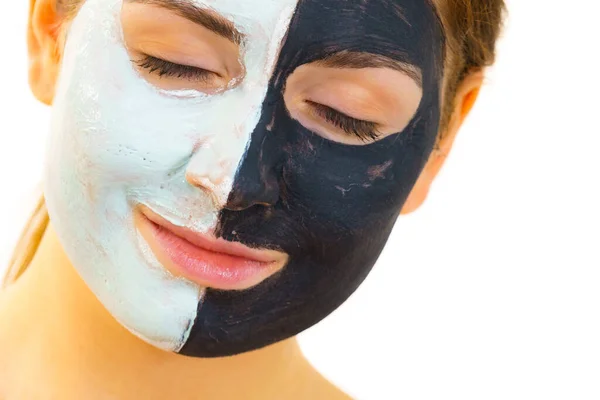
FAQs
What should I do immediately after a chemical burn on my face?
Immediately rinse the affected area with cool, running water for at least 15-20 minutes to remove the chemical. Avoid using hot water, as it can worsen the burn. If the chemical is in powder form, brush it off the skin before rinsing.
Should I seek medical attention for a chemical burn on my face?
Yes, seek medical attention immediately, especially if the burn is severe, covers a large area, or involves sensitive areas like the eyes, nose, or mouth. Even if the burn appears minor, a healthcare professional should evaluate it to prevent complications.
Can I use over-the-counter creams or ointments on a chemical burn?
Avoid using over-the-counter creams or ointments without consulting a healthcare professional, as some products may further irritate the burn or trap chemicals in the skin. Follow the advice of your doctor for appropriate treatment options.
How can I manage pain from a chemical burn on my face?
Over-the-counter pain relievers like ibuprofen or acetaminophen can help manage pain. However, consult your healthcare provider for specific recommendations. Avoid using topical pain relief products without medical advice.
What home remedies are safe for treating a chemical burn on the face?
After rinsing the burn with water, you can apply a clean, cool compress to reduce pain and swelling. Aloe vera gel can be soothing but consult your doctor before applying it. Avoid home remedies like butter, oil, or toothpaste, as they can worsen the burn.
How can I prevent infection in a chemical burn on my face?
Keep the burn clean and dry. After initial rinsing, gently clean the area with mild soap and water. Avoid touching or scratching the burn. Your healthcare provider may recommend an antibiotic ointment to prevent infection.
When should I be concerned about scarring from a chemical burn?
Scarring risk depends on the burn’s severity and depth. Seek medical advice early for appropriate wound care and potential treatments to minimize scarring, such as silicone gel sheets or pressure garments, if recommended by your doctor.
Can I use makeup to cover a chemical burn on my face?
Avoid using makeup on a fresh chemical burn as it can irritate the skin and hinder healing. Once the burn has fully healed and your doctor gives approval, you can use non-comedogenic makeup products.
Is it normal for a chemical burn to blister?
Blistering can occur with chemical burns. Do not pop or break blisters, as this can lead to infection. Protect the area with a clean bandage if necessary, and follow your healthcare provider’s advice for wound care.
How long does it take for a chemical burn on the face to heal?
Healing time varies based on the burn’s severity. Minor burns may heal within a few days to a week, while more severe burns can take several weeks or longer. Follow-up with your healthcare provider to monitor healing progress.
What should I avoid doing after getting a chemical burn on my face?
Avoid exposing the burn to sunlight, as this can cause further damage and increase the risk of scarring. Refrain from using harsh skincare products, hot water, or engaging in activities that can irritate the burn.
How can I protect my skin from future chemical burns?
Use appropriate protective gear, such as gloves and face shields, when handling chemicals. Read and follow all safety instructions on chemical products. Store chemicals safely out of reach of children and pets.
conclusion
In conclusion, treating a chemical burn on the face requires prompt and careful action to mitigate damage and promote healing. Initial steps should include immediately rinsing the affected area with copious amounts of water to remove any residual chemicals, followed by gentle cleansing with a mild soap.
It is crucial to avoid using harsh substances or scrubbing the area. After thorough rinsing, seek medical attention to assess the severity of the burn and receive appropriate care. Medical professionals may prescribe topical treatments, pain relief, and protective dressings.
Adhering to medical advice, keeping the wound clean, and monitoring for signs of infection are essential for optimal recovery. Preventative measures, such as using protective gear and following safety protocols when handling chemicals, are equally important to avoid future incidents.
